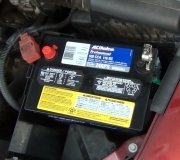I suspect all the confusion can be solved by just understanding how the electrical system works. This started with the '97 Intrepids.
The first problem is using the test light to measure current drain. If it's the common, inexpensive test light with an incandescent light bulb inside, those need a lot of current to light up the bulb. Also, the bulb drops a lot of the 12.7 volts you started with, leaving significantly lower voltage to power the electrical system.
When you turn the engine off, it can take up to 20 minutes for the computers to go to "sleep" mode. During that time, you can have up to three amps of current flow. That will drop very low after that time-out, but if you do anything to break the circuit, that time-out starts all over again. Just disconnecting the test light, a battery cable, or even just switching ranges on the meter, if it has a mechanical range switch, will start the time-out all over. The bottom line is you have to do nothing to interrupt current flow, and you must wait for the system to go to sleep mode.
It sounds like you know a lot more about electronics than the average competent do-it-yourselfer, so let me start with the condensed version. I can elaborate on all of this later, as necessary. You need to disconnect the negative battery cable, insert the amp meter on the ten-amp scale, watch the reading before and after the time-out has occurred, then place a jumper wire across the meter's probes before switching to a lower current range on the meter. Once you're on the lower range, remove the jumper so current has to flow through the meter. If you want to change the range again, reconnect the jumper wire first. That way current never gets interrupted.
The pulsing you saw in the test light is usually more noticeable. The test light is dropping too much voltage. One of the computers tried to go to sleep mode. It saw the low voltage and interpreted that as current flow had been interrupted, so it woke up again and resumed drawing high current. Basically, the test light is preventing going into sleep mode.
Once in sleep mode, the industry standard is a maximum of 35 milliamps, (.035 amp), is allowed to maintain the computer memories. Most test lights need around a quarter amp, (250 milliamps), to create a glow bright enough to see.
For the benefit of others researching this topic, I put these photos together to explain the procedure better. In the first one, the meter is connected in series with the battery. We normally remove the negative cable from the battery post because if the wrench touches anything metal at the same time, nothing will happen. This can work with the positive cable too, but you must be careful that the wrench never touches the cable and anything metal on the vehicle at the same time. My black meter probe has an alligator clip on it, so it is easy to connect to the extra stud on the battery. The red positive probe needs the green clip lead to keep it connected to the cable clamp. That's just used so I didn't have to stand there and hold it. The meter is set on the ten-amp range. That range is not protected with a fuse, and it requires the red meter lead be moved to the special 10-amp jack. Current drain is 1.46 amps.
The only thing that has changed in the second photo is current drain dropped to.04 amps, (40 milliamps), after roughly 20 minutes. To get more accuracy, it is necessary to switch to a lower range on the meter. In the third photo, the red jumper wire has been added between the two meter leads. Since current takes the path of least resistance, it goes through the red jumper wire instead of through the meter, so the meter is seeing 0.00 amps.
In the fourth photo, the red jumper is still in place, but the meter has been switched to the 200 milliamp range, and its red probe is moved back to the common jack on the meter. That jack is used for all of the meter's functions except for the ten-amp current range that was just used.
As a side note, there's two things the meter can do to start the time-out procedure all over. One is to unplug the red probe to move it from the ten-amp jack to the common jack. Unplugging it breaks the circuit. The less-known issue is all digital meters use a "break-before-make" style rotary switch for selecting ranges. That means as you turn the knob, the internal switch contacts break the connection to one range, then, as you continue turning, it makes the connection to the next range. That momentary break in the connection starts the timeout again. Current can go as high as three amps again for up to another 20 minutes. The meter is capable of handling the over-range condition, however, most of them have 2-amp fuses in line with the common jack. Current can easily exceed two amps and blow the fuse. At that point, no meter functions will work other than the ten-amp range.
In the last photo, the red jumper wire has been removed on one end. Current has to flow through the meter, but the current path has never been interrupted so all the computers have remained in sleep mode. On this lower range with much more accuracy, current is 42.8 milliamps.
Images (Click to make bigger)
Wednesday, November 1st, 2023 AT 2:02 PM






